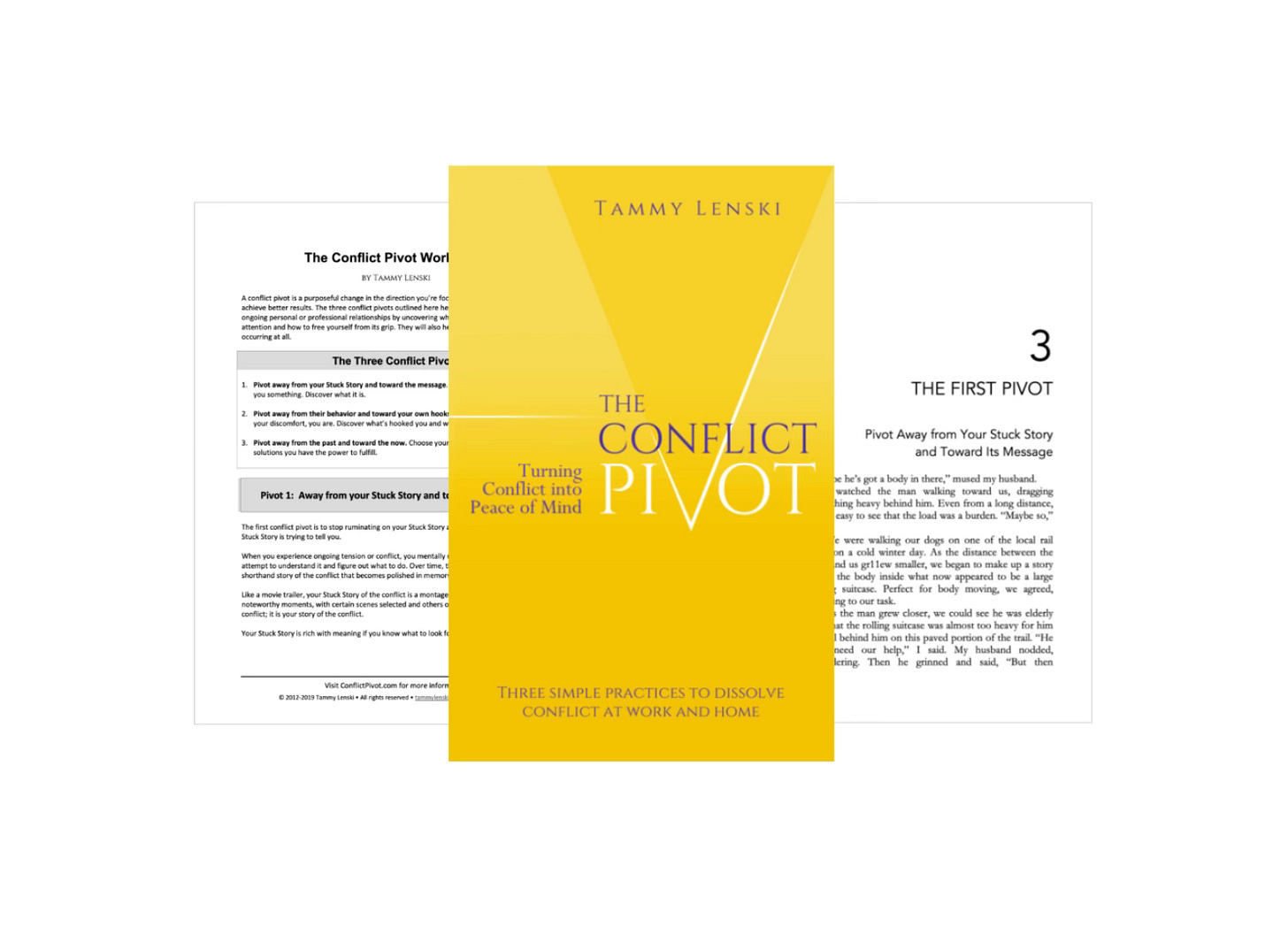Part 3 of 4: Part 1 | Part 2 | Part 4
In The Conflict Pivot, I described three cognitive changes of direction that alter a conflict’s trajectory:
Pivot away from their behavior and toward your conflict hooks.
Pivot away from the past and toward the now.
Pivoting away from the past and toward the now is hard to do. It’s hard to stop rehashing all that’s gone wrong. We say we want to face forward, but become strangely captivated by ruminating on a conflict’s past.
Don’t let yesterday use up too much of today.
CHEROKEE PROVERB
Rowboating is the desire to move forward in a conflict, but continually looking back. I coined the term after reading this exchange in Louise Penny’s novel Bury Your Dead, set in the Province of Québec, Canada:
He laughed. “I sometimes think we’re a rowboat society.”
“A what?” asked Jean.
“A rowboat. It’s why we do things like that.” He jerked his head toward the window and the dot on the river. “It’s why Québec is so perfectly preserved. It’s why we’re all so fascinated with history. We’re in a rowboat. We move forward, but we’re always looking back.”
Rowboating is, to some degree, a habit of mind. We spend energy licking our wounds, ruminating on the hurt or perceived insult, totalizing the experience, or expecting them to change. We stop short of the hard work of exploring why the conflict has its hooks in us and how to reclaim our agency, our sense of control over our destiny.
And as with other habits of mind, we can replace the habit with something more rewarding.
Conflict hooks play a role in rowboating, and familiarity with them gives us two crucial paths forward.
One path is the path of letting go.
Our conflict hooks can cause us to experience identity insult where none was intended; when we learn to recognize those moments, we make it possible to shrug off minor identity quakes and completely prevent some conflicts from occurring at all.
Sometimes, the identity insult we perceive isn’t one we can initially shrug off. It feels too consequential. But by reflecting deeply on what we want for ourselves and how our hooks may be thwarting that wish, we can find the path to letting go.
In the book, I tell the story of a mediation colleague who, many years ago, copied substantial content from my website to his. He’d been vague when he asked permission to borrow “a bit” of phrasing he liked. After much reflection, I decided not to confront him, but instead to revise a significant portion of the language on my website. When I used this case study in my classes, my grad students were aghast that I didn’t confront him. Was I permitting a clear copyright violation by being avoidant? No. I realized there was more important work I needed to do: I needed to ensure the language on my site was more personalized, reflecting my approach and style.
The other path is the path to having the “right” conversation. When we become aware of and familiar with our conflict hooks, we illuminate what the conflict is really about for us. That’s the conversation that’s waiting to be had.
Some time ago, I coached a consultant who had lost his temper with one of his clients. He was concerned not only about losing the client, but also that the client would file a complaint with one of his profession’s oversight boards. After learning about conflict hooks, he realized that the conversation he needed to have with his client would need to be something along these lines:
I didn’t just surprise you with my anger—I surprised myself. I was shocked and determined to figure out what caused me to overreact and damage a professional relationship I value. After a lot of soul-searching, I realized that when you questioned some of my data, I took it as a direct insult to my competence and integrity. When I view your questions calmly now, I see you were attempting to understand the data and make sure we were on the same page in how we interpreted it. I wish I had realized that then. What happened gave me new insight about myself that will help me avoid blowups in the future. I’ve got some work to do, and I will do it. I hope you will allow me to continue to serve as your consultant on this project.
Sometimes, the “right” conversation is what I call a Recalibration Conversation. I’ll cover that in Part 4.
Over to you
Here are journaling / conversation / comment prompts for your consideration:
Think about a time you’ve rowboated in a conflict. Where was your attention focused as you kept looking back?
What about it kept hold of your attention? Why was it captivating to you?
Was this a minor identity quake or a major one?
If it was a minor identity quake, what conflict hook got snagged, and what would help you shrug it off next time?
If it was a major identity quake, what are the possible “right” conversations you could have with them?



